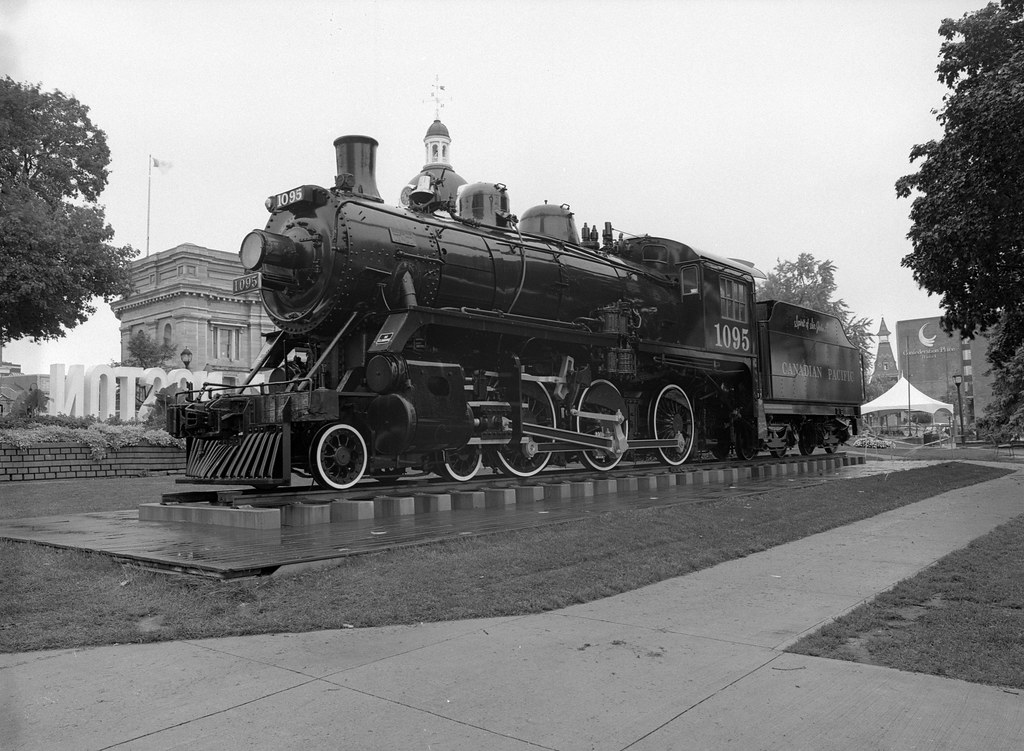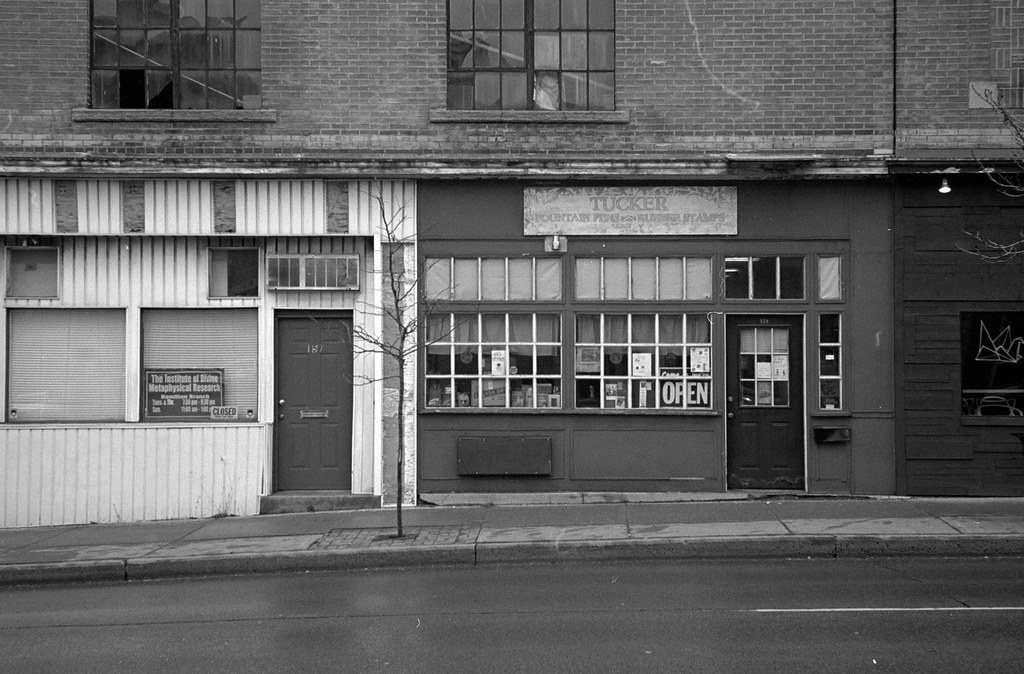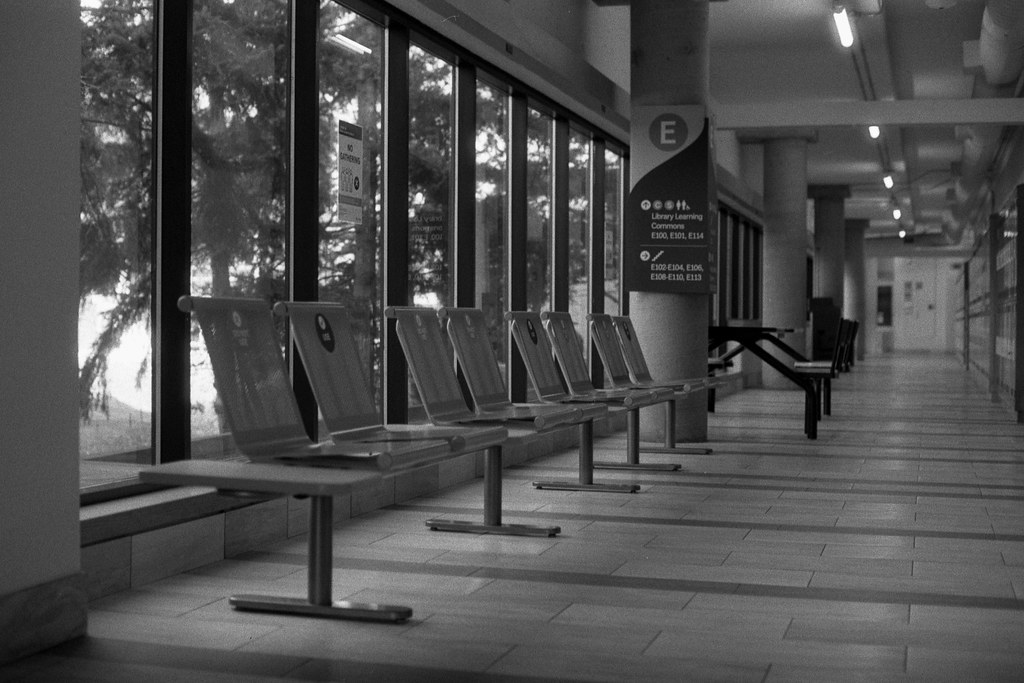Over the previous year, I worked hard to expand my knowledge of black & white film developers and find myself down a deep rabbit hole. Some good, some meh. Some I didn’t care for or I found them to be too specialised for average use. And while I have several up for review later this year and you can check those out later, here are seven that have stood out in my head as worthy of using again and of getting you out of the rut of using the more vanilla developers like D-76/ID-11, HC-110/Ilfotec HC, and Rodinal.
1 – Adox FX-39 II
Based on an improved version of Willi Beutler’s Neofin Red, Adox FX-39 II became a fast favourite after discovering the stuff. First mentioned by a reader of my review of Kodak Xtol. I quickly found that my local chemistry shop (Argentix.ca) carried the property and being at the height of last year’s lockdown. I wanted something new to play with, so I bought a bottle. I ended up going through the stuff way too quickly but was worth the effort. It’s the perfect blend between a general-purpose and speciality purpose developer that loves every film it develops. Plus it has standard times, and dilutions will work on films shot at box speed and are unlisted on the development chart.




2 – Adox Atomal 49
Another excellent developer from Adox and a classic Agfa developer that saw continued production through ORWO. Atomal 49 is based on the post-war formula (1949) and is again a new-to-me developer. It uses two familiar developers, hydroquinone and phinodione, which you find in D-76 and Rodinal respectively. Atomal produces dynamic tones, fine-grain, and retains sharpness. And it’s fairly economical being able to develop ten rolls of film per litre. You can easily purchase it in 1L or 5L kits depending on how much film. While the shelf life is only six weeks, but for volume processing, you can’t beat Atomal.




3 – Pyrocat-HD
Pyrocat-HD is not for the faint of heart; it is based on one of the oldest developers out there for photography. Pyrocat-HD is a modern formulation by Sandy King, and offers less toxicity (but it’s still super-toxic), with shorter development times and better film speeds. While mainly aimed at large-format photographers who need a highly compensating developer. I often use Pyrocat-HD as my magic bullet. It offers excellent highlight and shadow details, lovely contrast and tone while maintaining mostly fine-grain and improved sharpness. Plus the chemical has a decent shelf life, more if you go with the glycol version. Note that the developing times are fairly long, I’ve only seen one under nine minutes. It also comes in two parts and is generally mixed 1+1+100 so a 500mL bottle will last you!




4 – Clayton F76+
Known to many traditional film labs as the magic juice, Clayton F76+ also known as FA-1027 and Aristia Premium Liquid. Is an amazing developer that will work well on almost all films that you throw it at. Designed as a fine-art developer to provide the best results out of your Ilford HP5+ the developer offers up dynamic tonality good edge sharpness and decent grain reproduction. Great for those who practice the zone system as the developer is also compensating. And as an added benefit, it will help reduce fog in expired films.




5 – Rollei Supergrain
Rollei Supergrain surprised me, before Supergrain I had only tried RPX-D designed specifically for RPX 100 and RPX 400 films, and I found it a little bit of a one-trick pony. But the results I got out of Supergrain made be look again at the Rollei brand of developers. It’s a modern update on the AM74 developer that offers up fine grain and a universal set of times and dilutions for unlisted film, and it does work. It will certainly be one that I will try again mainly because it did a great job with any film I souped in the chemistry.




6 – Acufine
If your photography requires a large amount of film torture and constant under-exposure but hate how the film looks when push processed? Well, let me tell you about Acufine, the lesser-known cousin to Diafine, and slightly cheaper in the long run. It is clearly the most compensating developer out there because you can develop your underexposed film and not get the increased contrast, grain, softness, and all the downsides to push-processing. But it doesn’t work well on every film, your films that are already fast (Delta 3200, TMax P3200) or slow film like Rollei Retro 80s. You will want to use your medium (100, 200, 400) speed films to use as your base.




7 – Ilford Perceptol
After a large number of exotic film developers, I bet you didn’t expect to see Ilford Perceptol on the list! But while most people will go to Ilford Microphen, which is designed for push processing, Perceptol is designed for pull processing. And you know, it does an excellent job at what it does. You lose a bit of film speed and need to over-expose your film when shooting, but the results are spectacular, and I would take Perceptol over Rollei Low-Speed. Sadly it is not an economic developer; you only get four rolls per litre of stock solution, which is pricey. But then again most people did not get into film photography to save money.




I apologize for this article’s click-bait style; it is a bit of an experiment to write a click-bait list article. I also stand by the developers I’ve listed above. That’s not to say you should go and pick these things up to replace your standard run-of-the-mill developers with these specialised ones. If anything, the two developers that I feel would make the most sense to replace your everyday developers are the two Adox offerings. Since they also make Rodinal, you can run an entire black & white film developing Adox chemistry operation. I love HC-110, D-76, and Rodinal but sometimes you want to get away from the meat and potatoes and try something a little bit different with a different flavour pallet. Like anything with photography, try stuff that you think can deliver what you’re looking for in the final product. And if you like it, stick with it, if you don’t leave it alone.
1 Comment